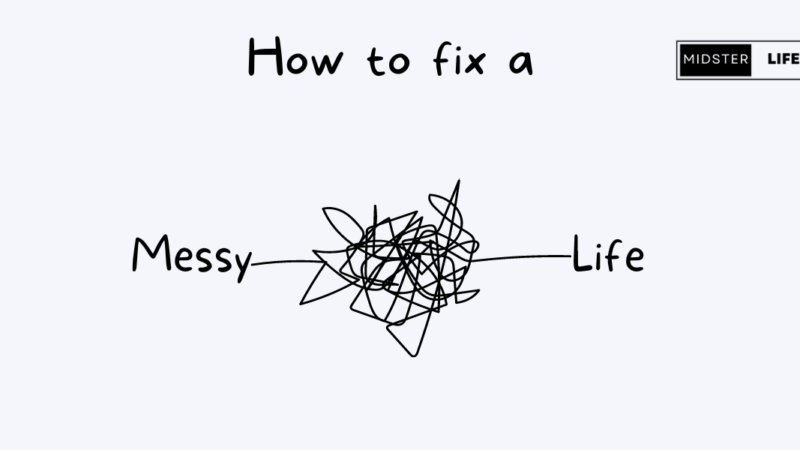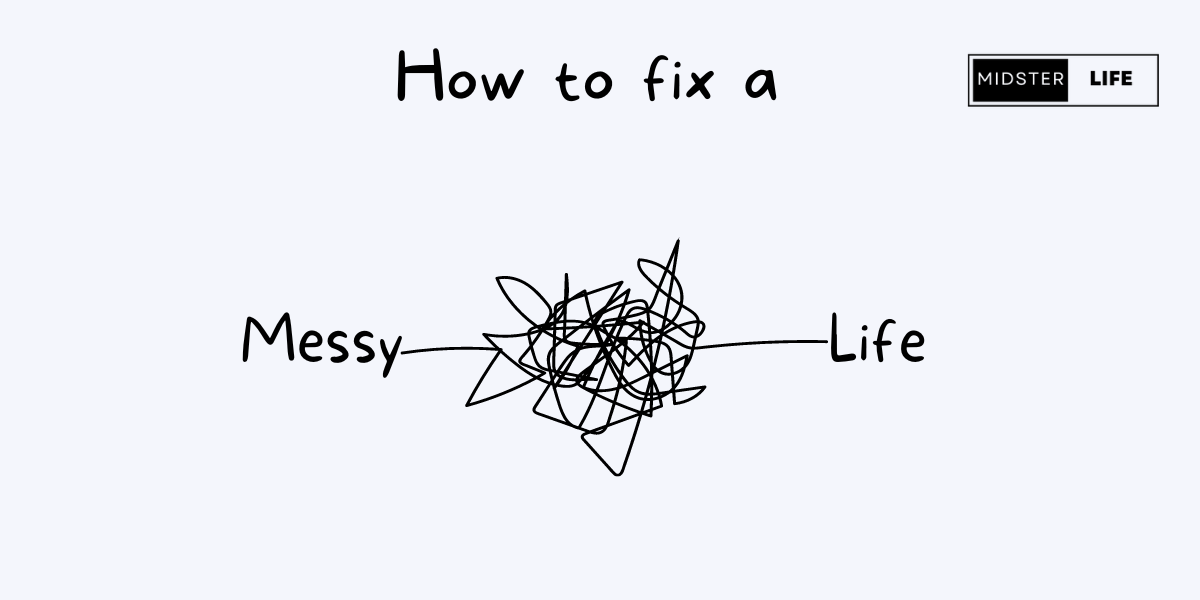Life after 40: How to restore balance and reclaim your happiness
It was 2005.
Million Dollar Baby won an Oscar for best picture.
Video-sharing website YouTube launched (I wonder what happened to them?). And Brad Pitt and Jennifer Aniston had just gotten divorced.
I was fresh-faced, youthful, and traveling around Australia in a VW Campervan.
And what a campervan it was. Soooo handsome. People flocked to look at it, sit in it, wave at it, and be near it.
It was a true beauty.

But underneath, all was not well.
Breakdowns were common; parts were failing.
From the outside, the campervan looked great, but years of neglect had left the inside a mess.
Then one day
after breaking down in a BP gas station, a helpful Knight came to the rescue armed with a couple of cables and an electric charge, ready to jump-start this handsome hunk back into life.
Connecting the cables up to the battery, he gave it a blast.
Nothing.
Not even a spark.
Definitely no roar of combustion.
Nothing could restart this old boy’s depleted mojo and get him going again.
It didn’t help that the not-so-shining knight in armor was fumbling around with his equipment, trying to jump-start the fridge battery rather than the one that made the van work.
Nevertheless, this poor V dub had some problems.
A lot of problems.
And when you’ve been around the block a few times, are a bit worn out, and have many problems, it’s hard to know where to start.
(Obviously, the correct battery would help).
Sometimes you need some help and a full internal check to identify which parts are out of whack.
And like our old VW campervan, we Midsters can find we are out of whack, too, if we don’t understand where, what, and why we are depleted and running low.
We can spend time trying to jump-start our metaphorical fridge battery rather than focussing on the areas that need our attention to get us back on track and regain our energy and excitement for life.
So if you are feeling a bit low, depleted, stressed, and just out of sorts, it may be time to see if you can work out which areas of your life are off-balance.
Do you know if your life is balanced?

The Midster Wheel of Life
To help, I’m sharing with you the Midster Wheel of life.
This valuable tool helps you identify which areas of your life work well and where things might need better alignment.
How to use the Midster Wheel of Life
Use the wheel to score where you are with each area of your life.
Rate the categories with a score from 1 to 10. With 0 being very dissatisfied and 10 being fully satisfied.
Then link the dots.
Are there some obvious areas that look unbalanced?
Are there any surprises? Are your lowest scores in areas you were already aware of? Do you understand the reasons for low scores in these areas? If not, further self-reflection may be needed to get a deeper view of what’s causing unbalance in these areas.
How to restore balance to your life after 40
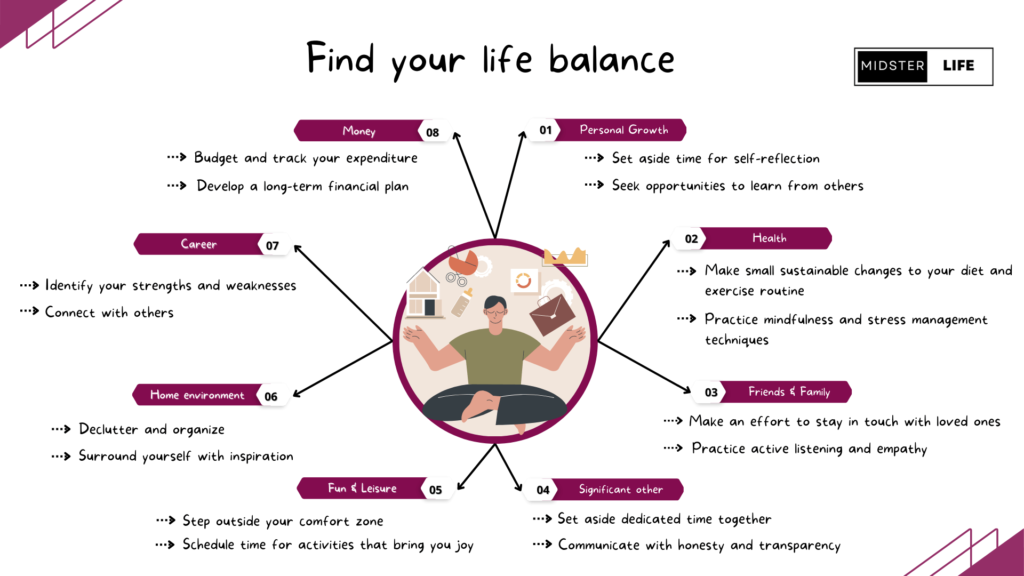
The demands of life in our 40s, where work, family, and other obligations can quickly take over, leaving us feeling overwhelmed and out of balance, with little time for self-care and personal fulfillment. Especially for Midsters in their 40s, who may be dealing with several physical, emotional, and financial challenges.
Whatever the imbalance within your life, you can take many practical steps to restore balance and find more joy and satisfaction in your daily life, no matter your age or circumstances.
Let’s take a look at each of the areas of the Midster Wheel of Life and walk through 2 practical examples of how you can make improvements in each area:
1). Personal growth
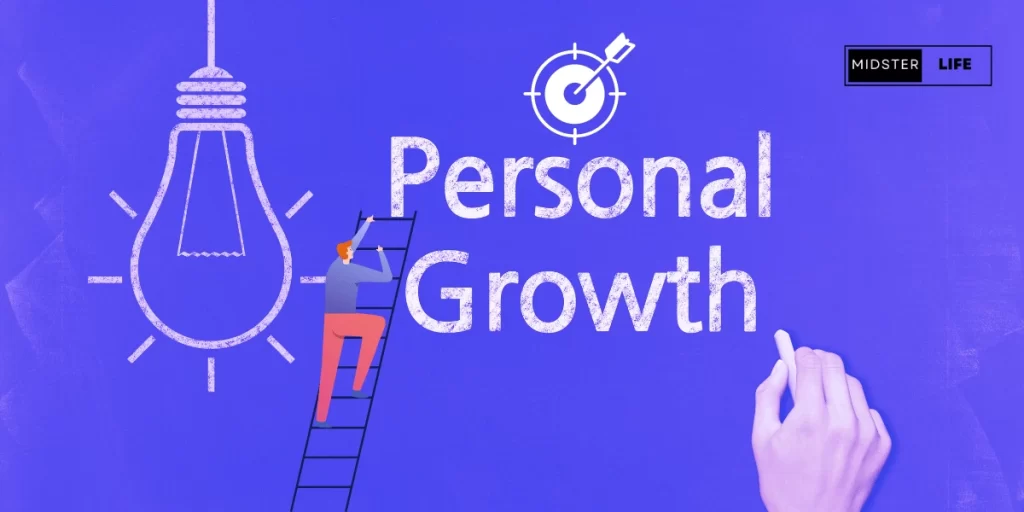
Set aside time for self-reflection.
Set aside regular time daily or weekly for self-reflection. Use this time to understand what is important to you. Set some goals around how you can improve this area. Read books, listen to podcasts, attend workshops or talks to get inspired, and help you grow.
Seek opportunities to learn from others.
Are there community or networking groups you can get involved with? Or clubs on topics that you have an interest in? Spending time with like-minded people and being open to constructive feedback from others will help you improve balance in this area.
2). Health
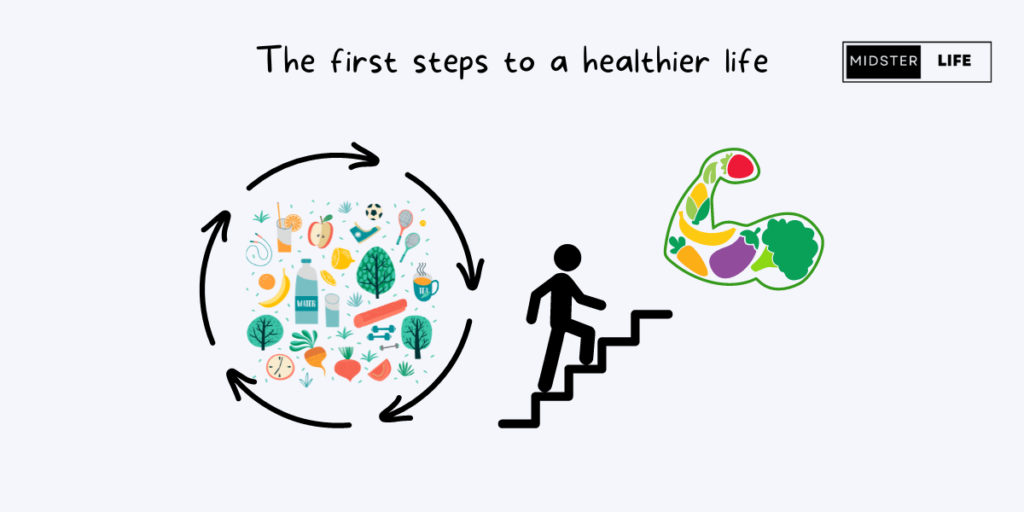
Make small sustainable changes to your diet and exercise routine.
You may commit to drinking more water daily, going for a 10-minute walk, or running once a week. Start small and build the changes into your daily and weekly routines to give yourself the best chance of success. Gradually build up the intensity and duration of your exercise as you progress.
Practice mindfulness and stress management techniques.
Mindfulness and stress management techniques, such as meditation, deep breathing, or even yoga, can help you reduce stress and anxiety and improve your overall mental and physical health.
Incorporating these into your daily routine will help you build resilience to life’s challenges over time. You can include mindfulness in your life in practical ways. For example, if you go for a daily walk, try to regulate your breathing and take time to notice what’s around you, the birds, the trees, and the way the air feels.
It doesn’t have to be about incense sticks and sitting crossed-legged on a mat. Mindfulness is accessible to everyone, even the most cynical among us.
3). Relationships with friends and family

Make an effort to stay in touch with loved ones.
Building new connections in your 40s isn’t easy, and leading busy lives with lots of responsibilities can mean we let important relationships in our lives slide. By making that phone call or sending that text message, you can still maintain a connection with those important to you. Spend dedicated time with them in person, whether having a beer together or doing an activity you enjoy.
Practice active listening and empathy.
When interacting with people important to you, try to consciously understand their perspective and feelings and show that you care through your words and actions.
4). Your significant other
Set aside dedicated time together.
Ensuring you have dedicated time with your partner is important to maintaining a connection. Simple activities include having a regular date night, walking together, or cooking a meal together. This time should be free from distractions such as phones, work, or other obligations. The important thing is to prioritize your relationship and make time for each other regularly.
Communicate with honesty and transparency.
Communication is vital in any relationship. Be honest and transparent with your partner about your thoughts, feelings, and needs, and make an effort to actively listen to your partner and express yourself in a way that is respectful and non-judgmental. Ensuring they feel heard and respected can help build trust and strengthen your connection.
Additionally, make sure to address any issues or conflicts promptly and constructively rather than letting them fester and escalate.
5). Fun and leisure
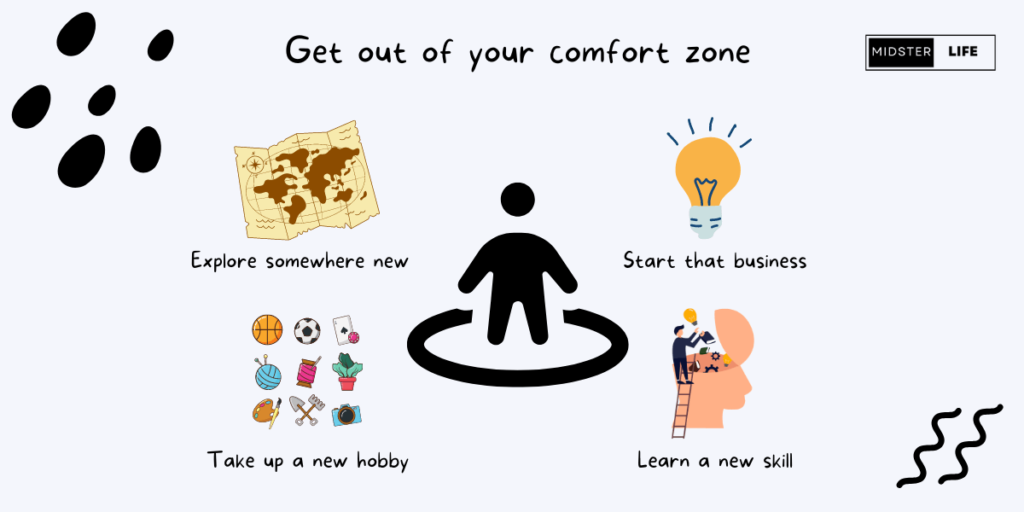
Step outside your comfort zone.
Use your leisure time to step outside your comfort zone and try something new. Experiment with life, try a new food or explore a new part of your city, or be daring and take up a new extreme sport or hobby.
Schedule time for activities that bring you joy.
If you love a round of golf or a movie trip, make sure you schedule it in your calendar. Make a conscious effort to prioritize leisure time in your schedule.
6). Your home environment
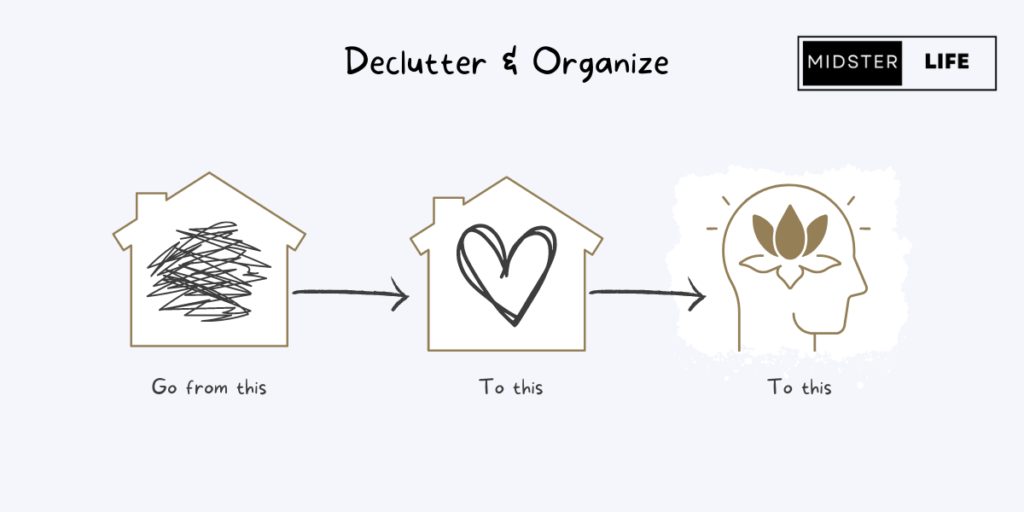
Declutter and organize.
Create a more peaceful and functional home by removing clutter and better organization. Start by removing unused or unnecessary items and finding a place for everything that remains. Consider incorporating plants or other natural elements to bring a sense of calm and tranquility to your home.
Surround yourself with inspiration.
Find a place in your home for items that bring you joy and inspire you, from art and photographs to unique decor or furniture that reflects your personality and style.
7). Your career
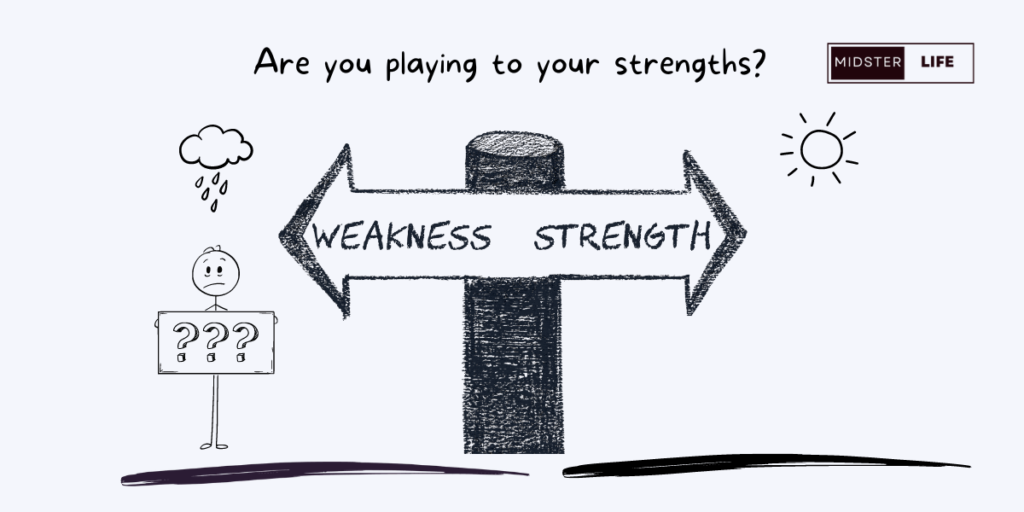
Identify your strengths and weaknesses.
With greater clarity over your strengths and weaknesses, you can seek opportunities that align with them. If you are still determining your strengths, trying new things is a great way to discover them. Try taking on new projects at work, pursuing additional education or training, or exploring new career paths altogether. You never know where it might take you.
Connect with others.
Build a solid professional network by attending industry events, joining professional associations, and connecting with colleagues and mentors. These relationships can help you stay up-to-date on industry trends and open up new opportunities for career advancement.
8). Your finances

Budget and track your expenditure.
Create a budget and stick to it. Start by tracking your expenses and identifying areas to cut back or save money. Consider automating your savings to make it easier to build an emergency fund or save for more considerable expenses. Seek out financial advice if you’re unsure of how to get started.
Develop a long-term financial plan.
Start by clarifying your goals and priorities and developing a long-term financial plan that aligns with them. Do you want to set aside money for retirement, save for a down payment on a home, or invest in your education or career development? Make sure your plan is realistic and achievable, and adjust it as needed over time. Ensure you get expert financial advice to help you make these decisions.
By assessing what shape your life is in and which areas are unbalanced, you are putting yourself in a stronger position to make the required changes and move your life forward.
Asking yourself the right questions and making small but meaningful changes in each area can help you achieve a more fulfilling and balanced life. Remember to be patient and persistent in your efforts and celebrate your successes along the way. With time and dedication, you can create a life that brings you joy, meaning, and purpose.

